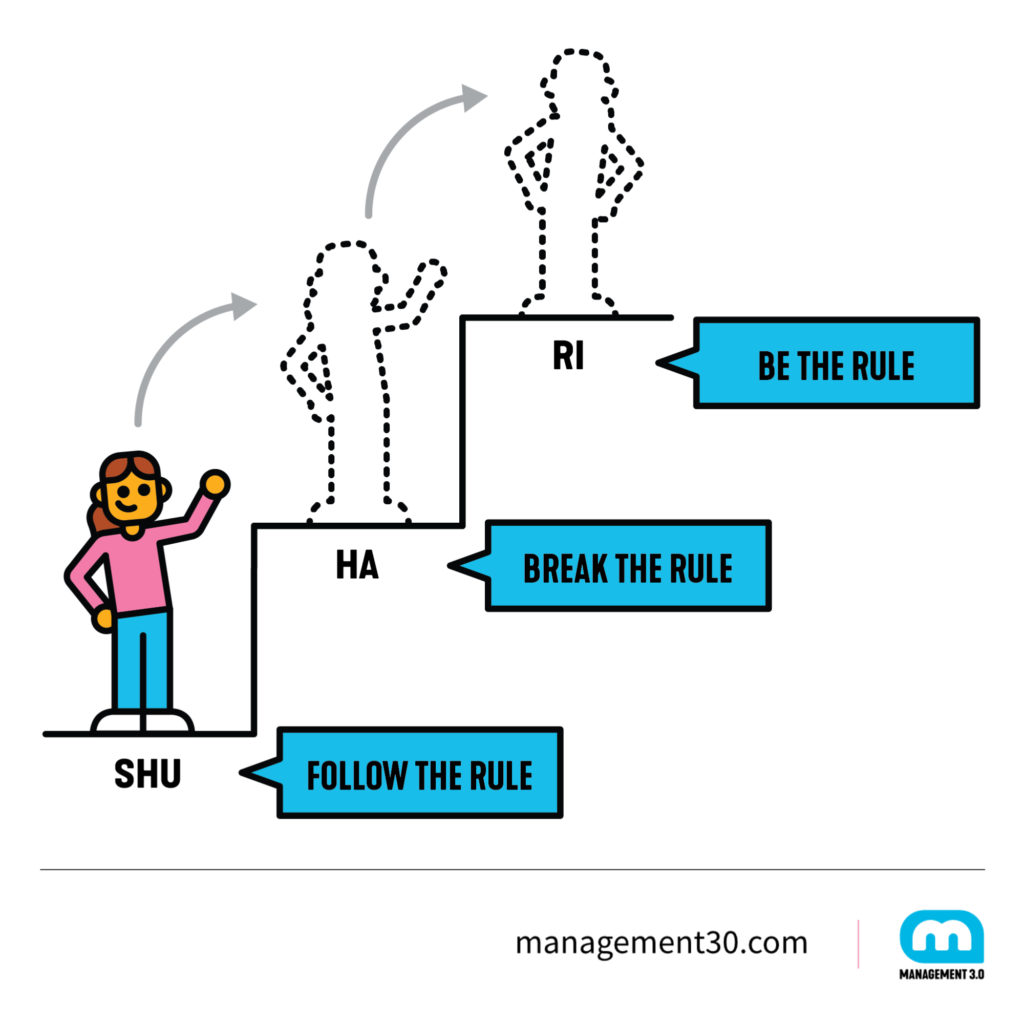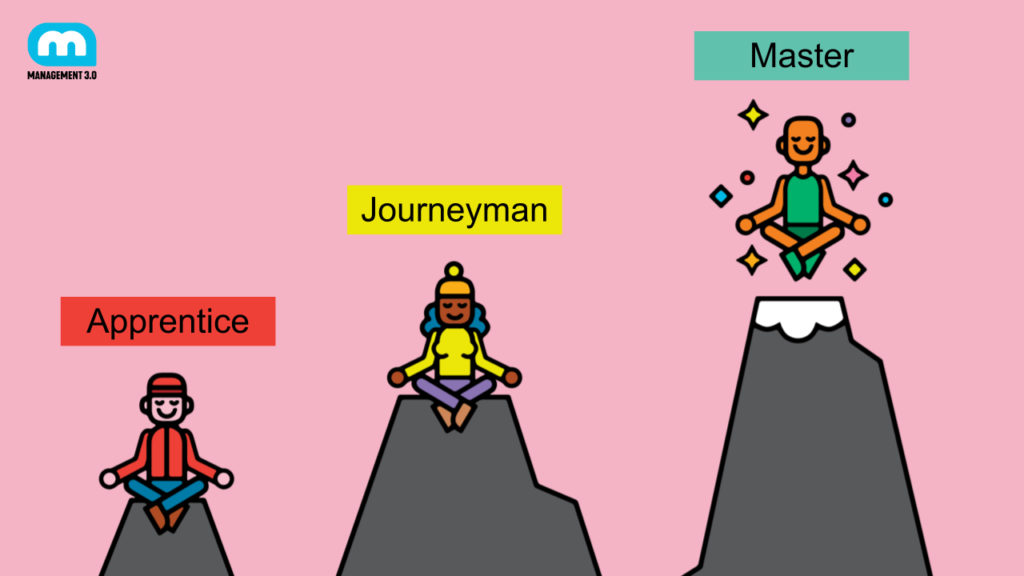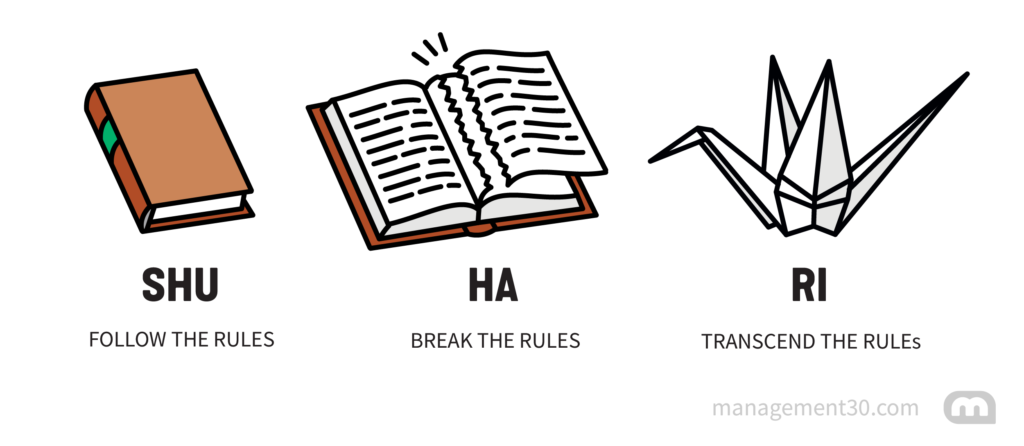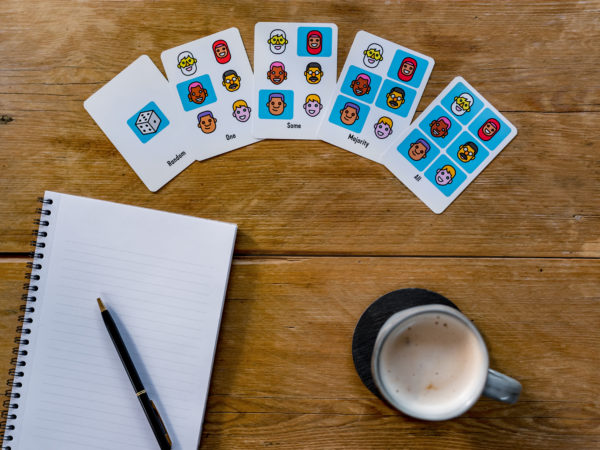Ilija Popjanev calls himself Master of Management. He specializes in Lean Six Sigma and PhD on Agile culture and leadership. He is an active trainer and facilitator who delivers more than 150 workshops per year. Ilija likes Star Wars and Agile and the concept of Shu Ha Ri. In this article he explains how this all comes together and what this has to do with Agile Leadership.
Quick links:
- What is Shu Ha Ri in Agile?
- Where does Shu Ha Ri come from?
- How can Shu Ha Ri help your Agile Transformation
- How do Human Resource people align Shu Ha Ri with their Agile tools?
- How does Shu Ha Ri work for Agile Coaches?
The first time I heard about the concept of Shu Ha Ri was 10 years ago when I started my Agile journey. For me as a facilitator and coach at first it seemed to be a simplified learning pattern. But if I start with the end in mind, from the present perspective, I can say in the simplicity lies the beauty and the power of this effective concept for learning new skills, including Agile.
What is Shu Ha Ri in Agile?
In the Agile world, we hear about Shu Ha Ri all the time. Many great Agile people including Alistar Cockburn, Martin Fowler, Lyssa Adkins have written about this concept, which certainly brings more value, importance, and know-how.
For me, Agile Shu Ha Ri is an effective conceptual framework to use our assumptions to identify blind spots, and to better understand the impact of Agile processes, which is crucial to our self-development and Agile journey.
When we teach people according to the Shu Ha Ri concept, we must use the proper style so students’ learning focus will:
- start with steps of imitation (doing it by the book),
- then shifting to understanding the principles of assimilation,
- finally into self-discovery and innovation.
People learn and grow faster and better when they have good coaches and mentors. That’s why, in Shu Ha Ri, the relationship between master and apprentice is so important.
According to Yoda from Star Wars:
“Always two they are, no more, no less. A master and an apprentice.”
This concept is very powerful because of its simplicity and wide range of applications. In the Agile world it’s very popular because it helps to:
- create a learning organization,
- foster experimentation,
- use the power of collective intelligence,
- encourage continuous improvement.
Where does Shu Ha Ri come from?
Originally, Shu Ha Ri comes from Japanese martial art Aikido, used to describe the stages of learning on the path to mastery in this skill. But from a perspective relevant to Agile adoption, the 3 stages mean:

Shu means “follow the rule” and here the apprentice learns and applies tools and skills from his master only. It’s essential for the apprentice to follow every instruction or task from his master, even if it seems not relevant or useless at first. The master will repeat the rules over and over until the apprentice learns and accepts the new skill. It’s important to go “by the book” due to efficiency in the learning process. When I teach students Delegation Poker or Moving Motivators, I guide them to follow my instructions until I see they understand and adopt the new tool. Then the next stage starts and the apprentice now becomes a journeyman.
The second stage – Ha means “break the rule”, where the journeyman can break the rules when he thinks it’s possible or appropriate. They can teach other people, learn from them, receive feedback, upgrade their theories and improve their skills. They can set new hypotheses, conduct experiments, redesign the practices and adopt new principles. They have to experience the principles by themselves, in practice, without the help from their master. I often adapt and customize some tools such as the Meddlers Game depending on the topic, group size, maturity level, etc.
In the next stage the journeyman becomes the master. Ri means “be the rule” and the master is self-learner, continuously conducting experiments and improving, creating his own rules, practices, principles and adopting everything he’s learned in the past. The master goes deeper in his discipline, fosters more experiments and creates new experiences for his personal fulfillment and self-discovery. The master instinctively adapts with the environment and brings everyone to a high performance state. Publishing books or research papers, frequently speaking at conferences, building your personal coaching style are only a few examples of becoming a master in some area of expertise.

How can Shu Ha Ri help your Agile Transformation
Shu Ha Ri is an important concept for Agile adoption and transformation because it helps team members to better experience the tools and change their mindset. For example the discussions and decisions made when practicing Delegation Poker the right way are essential. People can create bad habits if they don’t use the tool properly. That’s why they need the master to guide them and teach them how to use it. But since they’ll master the tool, great energy, flow and healthy discussions will rise every time they use the tool. Delegation Poker can help teams establish better routines, rules and behaviors and with regular check-ins and follow-ups, continuously improve all those practices. Without the master to guide them from the beginning, probably the tool will become one more failure as we have so many in the Agile world.
How do Human Resource people align Shu Ha Ri with their Agile tools?
Human Resource (HR) professionals also foster Shu Ha Ri, by using Agile tools such as Team Competency Matrix and building T-shaped people. The simplicity of this tool brings fast results and alignment with many other tools and practices such asObjectives and Key Results (OKRs), various learning and career development strategies, culture change programs etc. HR is the catalyst of organizational agility and their journey to redesign the organization, empower self-managed teams and energize people. They need concepts and practices that can change people’s mindset.
The Team Competency Matrix aligned with the Shu Ha Ri concept creates a learning organization. Because people can grow their skills in an environment where everyone in the team is equal and everyone can develop his/her career and skills to help the team achieve the objectives. By using the three levels of the Shu Ha Ri concept, team members can easily find skill gaps in the Team Competency Matrix and fill them in an Agile way. All the required skills the team needs can be easily met because there is always a team consensus regarding the levels of knowledge, development and mastering in the specific skills.
How does Shu Ha Ri work for Agile Coaches?
Shu Ha Ri is very popular among Agile Coaches, starting as Scrum masters on a team level or higher as Agile Coaches working with multiple teams in the organization.
On a Shu level, coaches are facilitating events, building Scrum values and mindsets, improving processes on retrospectives, helping team members grow, and simply by teaching and practicing. They are building their competencies and discovering their coaching toolbox through hours of practicing, experimenting, failing, and learning.
Then in the Ha stage, they will practice more than the guiding and prescribed rules. Here the coach wants to learn more, practice hard, and expand their toolbox. They start to build strong relationships in the team, navigate conflicts, peer accountability, problem solving, and improve the flow and the team dynamics. In essence, the “inspect and adapt” approach is happening here and new learnings are coming, their skills are transcending, and new principles are built.
At the Ri stage, coaches are not attached to some framework or method, they choose what looks right at the moment. Their competencies are mastered and they can give the right response in almost every situation. Even if they fail, they inspect, adapt, and never make the same mistake again. They coach the team with strong meaning and purpose as a living organism by understanding the entire complexity of the system. They can scale practices, skills, behaviors, beliefs in the entire organization. Their curiosity keeps them learning constantly.
Also read: Management 3.0’s Agile Leadership tools for Agile Coaches

Perhaps the best way to understand the Shu Ha Ri concept is through the thoughts of Aikido master Shinan:
It is known that, when we learn or train in something, we pass through the stages of Shu, Ha, and Ri. These stages are explained as follows. In Shu, we repeat the forms and discipline ourselves so that our bodies absorb the forms that our forebears created. We remain faithful to these forms with no deviation. Next, in the stage of Ha, once we have disciplined ourselves to acquire the forms and movements, we make innovations. In this process, the forms may be broken and discarded. Finally, in Ri, we completely depart from the forms, open the door to creative technique, and arrive in a place where we act following what our heart/mind desires, unhindered while not overstepping laws.
Let’s build learning organizations practicing Shu Ha Ri the Agile way!
Header photo by RODNAE Productions (via Pexels)


